1800 568 911
The Ultimate Guide on How to Hunt in 2024
Learning how to hunt can be quite challenging and intimidating at first, but once you know how to break down your first hunt, you’ll be able to reap the rewards. From there, you’ll become addicted to the feeling, just like how I felt during my first successful hunt.

Hunting challenges our bodies and mind, and provides enthusiasts with the satisfaction of showcasing our skills to our friends and families.
Whether you're a novice hunter eager to learn or an experienced hunter looking to refine your techniques, this ultimate guide on how to hunt will walk you through the fundamentals of patience and executing a successful hunt (don’t forget to always be safe and responsible).
From understanding the basics to mastering advanced strategies, let's dive in on how to become proficient and responsible hunters.
Before we get into the juicy details, we first need to understand the rules and regulations of hunting. This will allow us to feel safe and secure in any area we choose to hunt.
Understanding Hunting Regulations

Obtaining the necessary permits and licences is an essential step for any hunter planning to engage in hunting activities.
The process ensures that hunters comply with legal requirements and conservation regulations, promoting sustainable and responsible hunting practices.
Here's a detailed expansion on the types of permits and licences required
1. Firearm Licences
- In Australia, all hunters must possess a valid firearm licence to legally own, possess, or use firearms for any purpose.
- The process for obtaining a firearm licence varies between states and territories, but generally involves background checks, criminal checks, mental health assessments etc.
- Individuals need to go through firearms safety training, and demonstration of a genuine reason for owning a firearm, such as hunting or sport shooting.
2. Game Licences
- Game licences are required for hunting specific game species under state or territory legislation.
- The types of game species (deer, rabbit, pigs, foxes etc.) and the associated licensing requirements may differ between states and territories, so it's essential for hunters to familiarise themselves with local regulations.
- Game licences typically specify the species that hunters are authorised to pursue, as well as the hunting seasons, bag limits, and other restrictions.
Doesn’t sound too hard right? Overall, ensuring you comply with the safety and regulations in whatever state or territory you’re in allows for peace of mind when hunting during season. Don’t be a fool, go through the right channels to help the hunting community out.
Planning Your Hunt
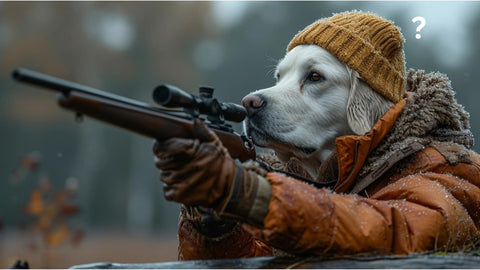
1. Researching Hunting Areas
- Utilise maps, hunting guides, online resources, and local knowledge to gather information about potential hunting locations. Facebook hunting groups are a great tool to use, as lots of likeminded hunters will be asking similar questions.
- Consider factors such as area quality, population density of game species (rabbits, foxes etc.), and public land access when selecting hunting areas.
2. Understanding Hunting Seasons and Regulations
- Check hunting regulations issued by state or territorial authorities to ensure compliance with licensing requirements, firearm restrictions, and hunting zone boundaries.
- Always stay up to date about any changes or updates to hunting regulations, as they may vary from year to year.
3. Scouting and Preseason Preparation
- Use trail cameras, game cameras, and scouting techniques to monitor game activity, track movement patterns, and gather information about animal behaviour.
- Prepare hunting gear and equipment well in advance, including firearms, ammunition, clothing, day optics, night optics and essential accessories. Ensure all equipment is in good working condition and properly maintained.
Essential Hunting Gear and Equipment
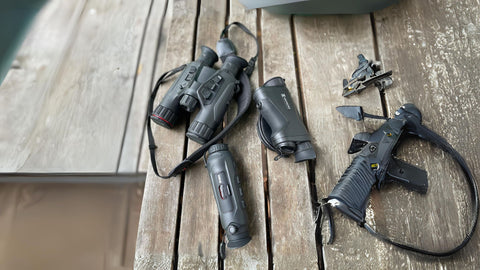
Pack essential gear such as binoculars, knives, first aid kits, and navigation tools for safety and convenience in the field.
1. Night time hunting
Ideally you’d want thermal optics to aid you in identification of game.
- Thermal monoculars - great as they are commonly lightweight and durable
- Thermal binoculars - easy to use, although they are more on the expensive side, these binos will save a lot of time and effort when hunting
- Thermal scopes - finding the right one will assist you like no tomorrow. Attach it onto your firearm with ease.. Happy hunting!
2. Day time hunting
Equipment such as spotting scopes, binoculars, and range finders are all essential for the hunters tool bag.
- Spotting scopes - inexpensive, ranges from beginner to expert. Able to attach a tripod without fatiguing the arms
- Binoculars - everyone should be familiar with the function and use. Inexpensive with a wide range of choices.
- Rangefinders - Most range finders will be attached to riflescopes, spotting scopes. You can purchase individual rangefinders if that tickles your fancy.
- Choose appropriate hunting attire for any conditions, including sturdy boots, camouflage clothing, and protective gear.
Hunting Techniques and Strategies
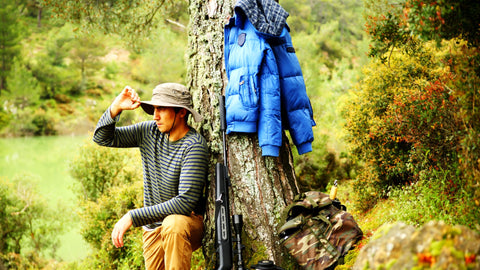
Whether pursuing large game in the outback or small game in the bush, learning different hunting techniques is essential for bringing back a good feed home. Here's a brief overview of hunting techniques and strategies that you can use:
1. Spot-and-Stalk Hunting
- Spot-and-stalk hunting involves locating game from afar, hunters often use binoculars or spotting scopes, as they approach the target for a clean shot.
- Hunters usually use their surroundings, vegetation, and wind direction to hide their movements and avoid getting noticed by the game. Animals can be quite intelligent when they're in their natural environment.
2. Stand Hunting
- Stand hunting involves setting up a stationary position, such as a tree stand or ground blind, and waiting for game to pass within shooting range.
- Hunters often choose locations based on personal experience, knowing typical movement patterns, and feeding areas of game.
3. Calling and Decoying
- Calling and decoying techniques are used to attract game by mimicking their vocalisations or using decoys to attract them closer to you.
- Decoys, such as decoy ducks for waterfowl hunting or decoy deer for big game hunting, can be used to lure game into shooting range.
4. Driven Hunting
- Driven hunting involves organising a group of hunters to drive game towards stationary hunters positioned strategically along game trails or escape routes.
- This technique is commonly used for hunting driven game species, such as deer, boar, or rabbits, in densely vegetated areas where visibility is limited.
5. Tracking and Still-Hunting
- Tracking and still-hunting techniques rely on the ability to interpret animal signs, such as tracks, droppings, and feeding areas, to locate game.
- Still-hunting involves deliberate, stealthy movements while scanning the surroundings for game, often in dense cover or wooded areas where visibility is limited.
6. Bowhunting Techniques
- Bowhunting requires specialised techniques for getting close to game and making accurate shots with a bow and arrow.
- Techniques such as tree stand hunting, ground blinds, and spot-and-stalk approaches are commonly used by bowhunters to increase their chances of success.
7. Adaptability and Versatility
- Successful hunters often combine multiple techniques and adapt their strategies based on changing conditions, such as weather, terrain, and game behaviour.
- Flexibility and versatility are key attributes of skilled hunters, allowing them to adjust their approach on the fly to maximise their hunting opportunities and achieve success in diverse environments.
Harvesting and Processing Game
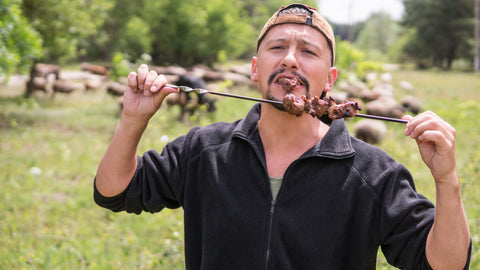
1. Field Dressing
- Field dressing is the initial step in processing game animals and involves removing the internal organs and excess tissue to cool the carcass and preserve meat quality.
- Hunters should perform field dressing as soon as possible after harvesting an animal to prevent spoilage and bacterial growth.
2. Skinning and Quartering
- Skinning and quartering involve removing the hide and dividing the carcass into manageable sections for transport and further processing.
- Hunters should use sharp knives and proper techniques to skin the animal, starting from the hindquarters and working towards the head.
- Quartering the carcass into primal cuts, such as hindquarters, forequarters, and backstraps, facilitates transportation and subsequent processing.
3. Meat Care and Preservation
- Hunters should promptly cool the meat by hanging it in a cool, well-ventilated area or placing it in a cooler with ice packs to prevent spoilage. Alternatively just place it in your freezer.
- Removing excess blood and hair, as well as trimming any bruised or damaged tissue, helps improve the flavour and texture of the meat. No one likes a hair in their food.
4. Cooking and Utilisation
- Hunters can explore different cooking methods, such as grilling, roasting, braising, or smoking, to highlight the natural flavours of game meat.
- Utilising all parts of the animal, including offcuts and bones, minimises waste and maximises the taste of the meat.
5. Food Safety Considerations
- Proper cleaning practices will help preserve the meat, including thorough hand washing and disinfection of equipment and surfaces, help prevent cross-contamination.
- Cook game meat to the recommended internal temperature to ensure it is safe to eat and free from harmful pathogens.
Post-Hunt Procedures
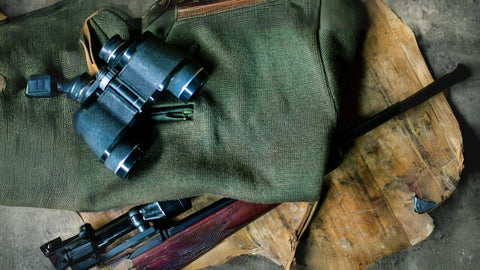
1. Equipment Cleaning and Maintenance
- Hunters should thoroughly clean firearms, knives, optics, and other gear used during the hunt to remove dirt, debris, and moisture.
- Inspecting equipment for signs of wear, damage, or malfunction ensures that it is in good working condition for your next hunt.
2. Gear Organisation and Storage
- Invest in storage solutions such as gear bags, storage bins, and gun safes to keep equipment organised and protected from the elements.
- Store firearms and ammunition securely in locked cabinets or safes to prevent unauthorised access and ensure compliance with firearm storage regulations.
Now that we’ve covered the main factors in an essential hunt, let’s consider safety and ethical hunting practices in your area. It is paramount to ensure that we respect ourselves and the area that we are hunting in.
Safety and Outdoor Skill
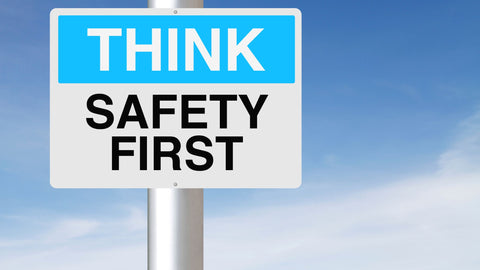
1. Firearm Safety
- Proper firearm safety is non-negotiable for hunters. Adhering to strict safety protocols prevents accidents and ensures the well-being of everyone in the hunting party.
- Essential firearm safety rules include always treating firearms as if they are loaded, keeping the muzzle pointed in a safe direction, and never placing your finger on the trigger until ready to shoot. We've all seen it in movies..
- Hunters must familiarise themselves with their firearms, including understanding how they operate, loading and unloading procedures, and ensuring firearms are in good working condition before each use. Instructions will be included with every purchase.
2. Firearm Handling Skills
- Never assume a firearm is unloaded. Treat every firearm with respect and handle it as if it were loaded at all times.
- Keep your trigger finger outside the trigger guard and alongside the frame or receiver of the firearm until you are ready to fire. This helps prevent accidental discharges.
- Learn and practice proper procedures for loading and unloading firearms safely. Follow manufacturer's instructions and handle ammunition carefully.
- Always ensure the muzzle of the firearm is pointed in a safe direction away from yourself and others. Never point a firearm at anything you do not intend to shoot.
3. Weather Preparedness
- Dressing in layers and wearing appropriate clothing for the environment helps regulate body temperature and provides protection from the elements.
- Monitoring weather forecasts before heading out on a hunt allows hunters to plan accordingly and make informed decisions about their hunting activities.
Ethical Hunting Practices
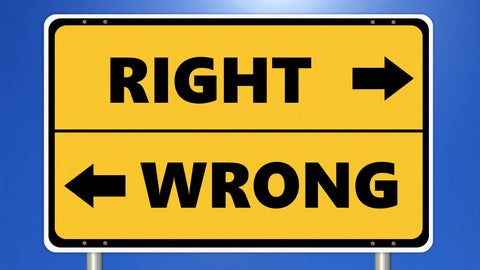
1. Respect for Wildlife
- Hunters should strive for clean and humane kills, minimising suffering and ensuring the swift dispatch of game animals.
- Respectful handling of harvested animals includes proper field dressing and care to preserve meat quality and minimise waste.
2. Conservation and Stewardship
- Hunters support conservation initiatives through habitat restoration, wildlife management programs, and participation in conservation organisations.
- Sustainable hunting practices, such as adhering to bag limits, promoting species diversity, and avoiding overexploitation of resources, are essential for maintaining healthy ecosystems.
3. Compliance with Laws and Regulations
- Hunters should stay informed about hunting seasons, bag limits, and prohibited areas to ensure legal compliance and avoid unintentional violations.
- Abide by the rules and regulations in your state and territory. Remember, it’s fair play for everyone.
4. Selective Harvesting and Sustainable Use
- Sustainable use of wildlife resources ensures that hunting activities do not jeopardise the long-term viability of populations or degrade habitats.
- Given that the area you’re hunting is not infested with pests, consider the ecological impact of their actions and strive to maintain balanced ecosystems that support healthy wildlife populations.
Whether seeking the thrill of the chase, the satisfaction of harvesting game for food, or the enjoyment of sharing experiences with fellow hunters, the pursuit of hunting offers endless opportunities for exploration, discovery, and connection with the natural world.
With proper respect for wildlife, adherence to regulations, and a commitment to conservation, hunters can partake in the classic tradition of hunting while safeguarding the worlds natural heritage for generations to come.
If you enjoyed this ultimate guide on how to hunt, leave a comment and let us know! Feel free to share it around with your hunting friends.. Cheers!


Leave a comment